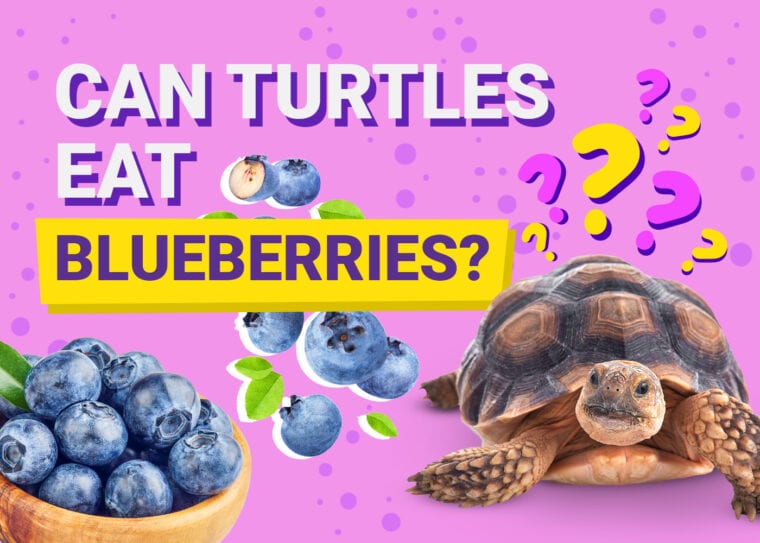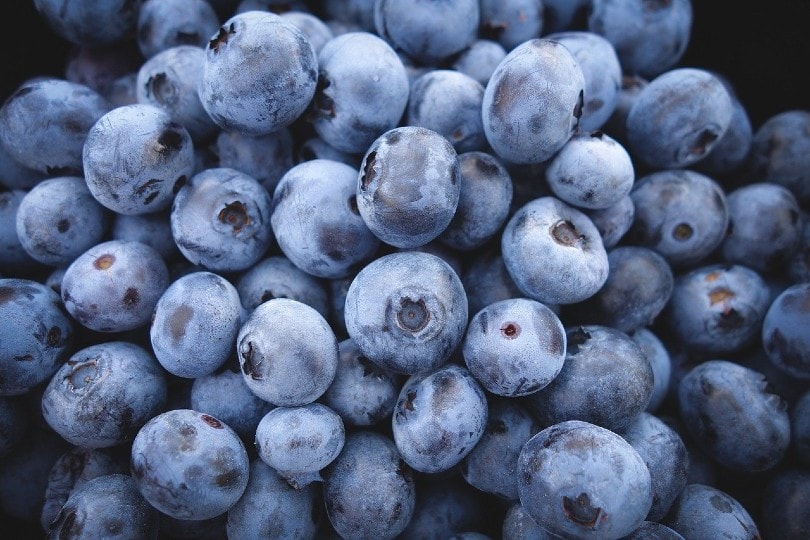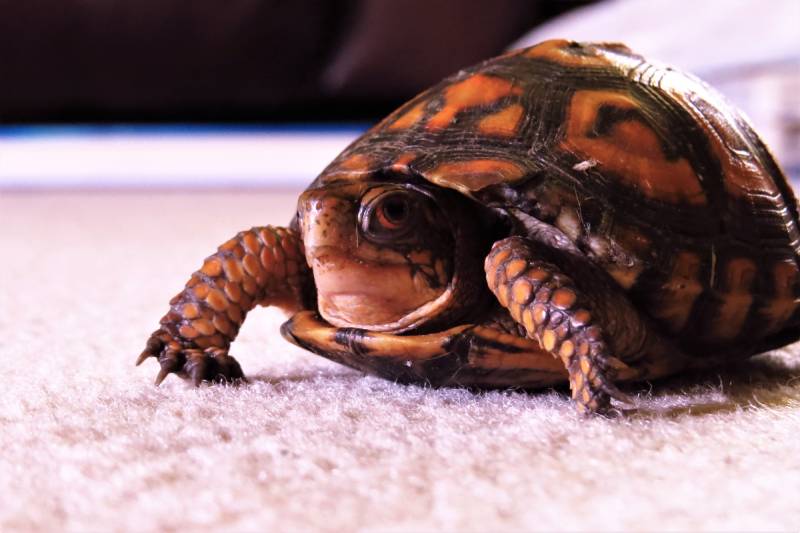
While owning a turtle doesn’t require you to take them for a walk to the dog park, you still must be careful about what you feed them. It’s perfectly fine to feed blueberries to most species of pet turtles, as long as you do it in moderation.
In this article, we break down everything that you need to know about blueberries and your turtle’s overall diet. Since there are many turtle species, we’ll be focusing our attention on freshwater aquatic turtles and North American box turtles of the genus Terrapene.
Can Turtles Eat Blueberries?
Omnivorous freshwater turtles can often safely consume blueberries. However, fruit should only be a small part of their diet. In the wild, turtles would opportunistically consume fruits that fall to the ground, but this wouldn’t be a major component of their food intake. Likewise, the dietary recommendations for freshwater aquatic turtles generally limit fruits to around 5% at most. North American box turtles seem to adapt to fruit better than other genera of terrestrial turtles, and around 15% of their diet can consist of fruit.
It is important to note that your pet’s species and age will play a major role in their diet. Generally speaking, juvenile omnivorous turtles tend to require a high percentage of animal-based meat in their diet, and there is little room for plant-based matter, let alone fruit (which shouldn’t take priority over vegetables). Likewise, even young box turtles would likely be better off with a slightly more protein-focused diet. Bear in mind that a turtle may take several years to no longer be considered a juvenile, so the dietary shift toward more plant-based foods does take time.
All that said, blueberries are safe for most turtles to consume. They are slightly more favored than many other fruits because they have relatively lower levels of sugar.

Do Blueberries Have Any Downsides?
Blueberries are not without their downsides. Like all foods, these can be better appreciated by looking at the nutritional analysis of blueberries.
Source: USDA
The main downside of blueberries is that they have a less-than-ideal calcium-to-phosphorus ratio. When understanding the dietary nuances of a turtle’s meal plan, you’ll need to factor in the ratio of several minerals, including calcium and phosphorus. Knowing how these interact with each other is instrumental in ensuring your pet’s health.
Within the animal’s body, these two minerals bind with each other. So, if a food item contains more phosphorus than calcium, your turtle’s body would naturally try to restore balance by releasing some calcium from its reserves, which is mostly stored in the bones.
For this reason, the recommended calcium-to-phosphorus ratio for most healthy turtles that are not reproducing is around 1.5:1 or 2:1. This means calcium should be either 1.5 times or twice as abundant as phosphorus in their diet.
Blueberries’ ratio is around 1:1, but given how blueberries should only be a small portion of a turtle’s diet, this isn’t cause for much concern. Still, it is a downside to consider, as it could be an issue if your turtle ate a large number of blueberries and nothing else.
The tiny details of the nutritional breakdown of many food items are why veterinarians suggest a high amount of variety in your pet turtle’s diet. What they lack in one food, they may get from another source. Doing so is considered good practice for turtle care and husbandry.
Other Fruits to Consider as Turtle Treats

With variety being crucial for turtles and fruits being treats, you might be wondering what other options are available for your beloved shelled buddy.
Remember that fruits should only make up a small portion of your pet’s diet. In addition, it is worth reiterating that we haven’t focused on carnivorous species of turtles here, as they shouldn’t be offered fruit and don’t benefit from it the way that other species might.
Final Thoughts
While it’s fun to watch your pet turtle chow down on different things, it’s also important to do your research and only give them foods that they can handle. Fruit is often considered a treat for most turtle species, as it typically doesn’t match the better nutritional profiles of most vegetables. That said, blueberries are among the best fruits that you can offer to your pet turtle due to their relatively low sugar content. However, note that their role in your pet’s diet should be considered equivalent to that of a treat.
Related Reads:








